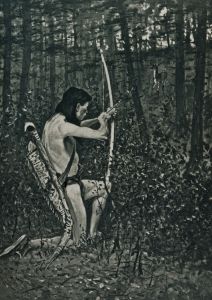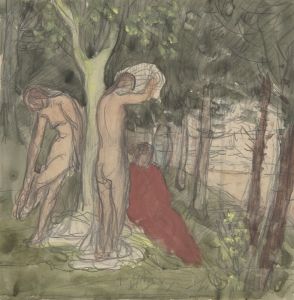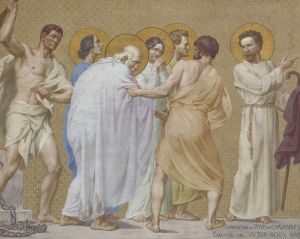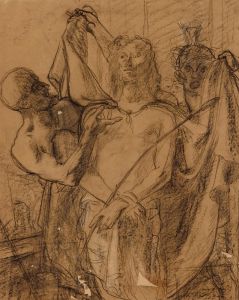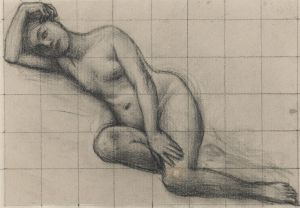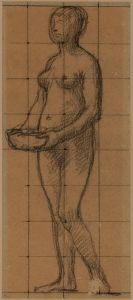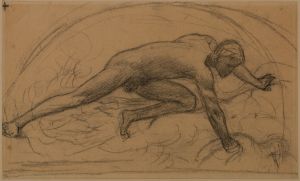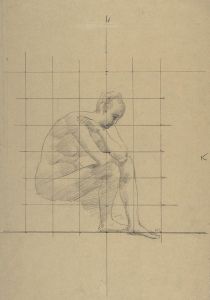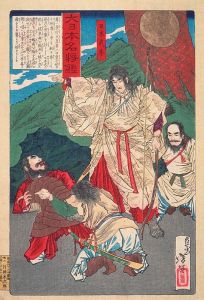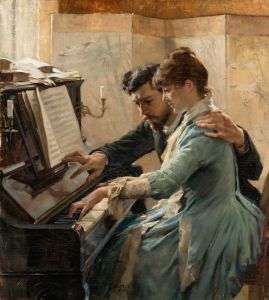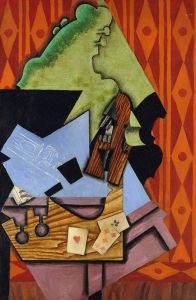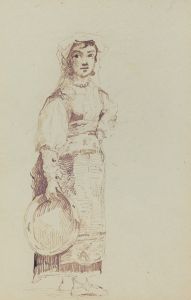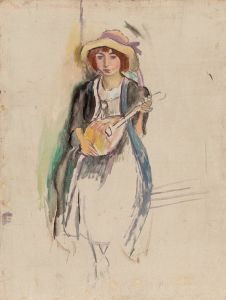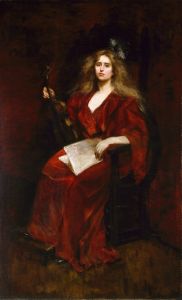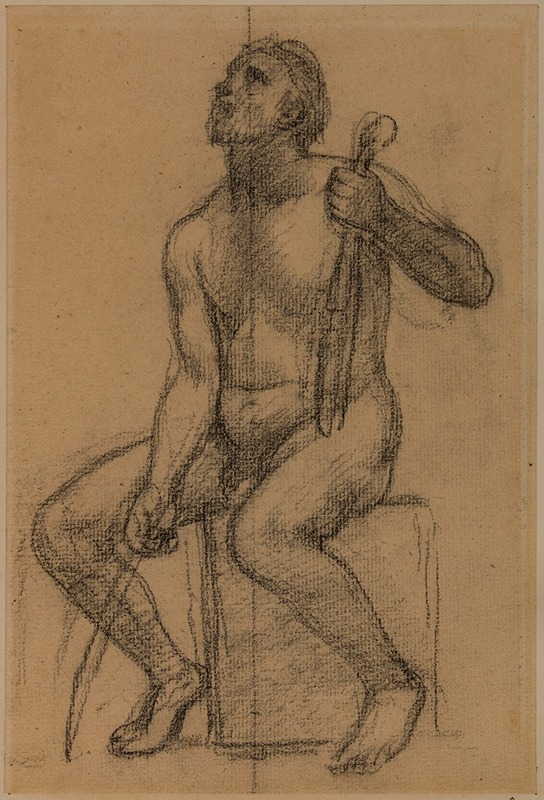
Homme nu assis, tenant un violon et un archet
A hand-painted replica of Pierre Puvis de Chavannes’s masterpiece Homme nu assis, tenant un violon et un archet, meticulously crafted by professional artists to capture the true essence of the original. Each piece is created with museum-quality canvas and rare mineral pigments, carefully painted by experienced artists with delicate brushstrokes and rich, layered colors to perfectly recreate the texture of the original artwork. Unlike machine-printed reproductions, this hand-painted version brings the painting to life, infused with the artist’s emotions and skill in every stroke. Whether for personal collection or home decoration, it instantly elevates the artistic atmosphere of any space.
Pierre Puvis de Chavannes, a renowned 19th-century French painter, is celebrated for his unique style that often blends classical themes with a modern sensibility. One of his lesser-known works, "Homme nu assis, tenant un violon et un archet" (translated as "Nude Man Seated, Holding a Violin and a Bow"), exemplifies his ability to merge the human form with symbolic elements.
Puvis de Chavannes was born on December 14, 1824, in Lyon, France. He initially pursued a career in engineering before turning to art, studying under several prominent artists of the time, including Eugène Delacroix and Thomas Couture. His work is often associated with the Symbolist movement, although he maintained a distinct style that set him apart from his contemporaries.
"Homme nu assis, tenant un violon et un archet" is a study in contrasts, featuring a nude male figure seated in a contemplative pose, holding a violin and a bow. The painting reflects Puvis de Chavannes' interest in the human form and his skill in rendering it with both anatomical precision and an ethereal quality. The choice of a violin as a prop introduces a layer of symbolism, often interpreted as a representation of harmony, creativity, or the intersection of physical and spiritual realms.
Puvis de Chavannes was known for his murals and large-scale works, many of which adorn public buildings in France. His approach to painting was characterized by a muted color palette and a focus on composition and form over intricate detail. This style is evident in "Homme nu assis, tenant un violon et un archet," where the simplicity of the composition draws attention to the subject's serene expression and the gentle curves of his body.
The painting is a testament to Puvis de Chavannes' ability to convey emotion and meaning through minimalism. The absence of a detailed background allows the viewer to focus entirely on the figure and the symbolic elements he holds. This technique is consistent with Puvis de Chavannes' broader artistic philosophy, which often emphasized the importance of conveying universal themes through simplicity and clarity.
Throughout his career, Puvis de Chavannes received numerous accolades and was highly regarded by his peers. He was a founding member of the Société Nationale des Beaux-Arts and served as its president. His influence extended beyond France, impacting artists such as Paul Gauguin and the Nabis group, who admired his ability to blend classical and modern elements.
While "Homme nu assis, tenant un violon et un archet" may not be as widely recognized as some of Puvis de Chavannes' larger works, it remains an important piece within his oeuvre. It encapsulates his artistic vision and his commitment to exploring the human condition through art. The painting is a reflection of his belief in the power of art to transcend the mundane and touch upon the universal truths of existence.
In summary, Pierre Puvis de Chavannes' "Homme nu assis, tenant un violon et un archet" is a compelling example of his artistic style and thematic interests. Through its simplicity and symbolism, the painting invites viewers to contemplate the relationship between the physical and the spiritual, a theme that resonates throughout Puvis de Chavannes' body of work.





